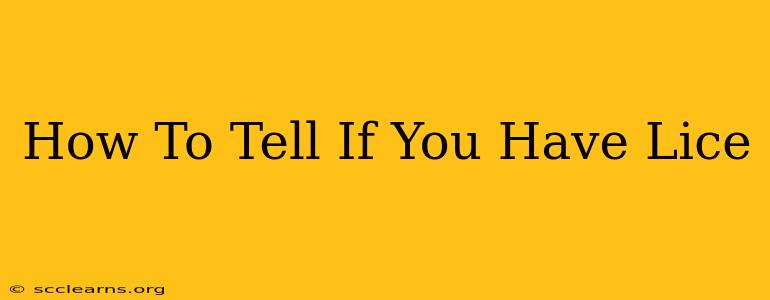Finding out you might have head lice is never pleasant, but early detection is key to effective treatment. This guide will help you understand the signs and symptoms of head lice infestation, so you can take appropriate action quickly.
Understanding Head Lice
Head lice are tiny parasitic insects that live and feed on human blood. They're highly contagious and spread easily through direct head-to-head contact. Unlike what many believe, lice aren't a sign of poor hygiene – they can affect anyone.
Common Symptoms of Head Lice
Identifying head lice can be tricky, as they are small and quick-moving. However, there are several telltale signs you should watch out for:
- Intense Itching: This is often the first and most noticeable symptom. The itching is caused by an allergic reaction to lice saliva.
- Visible Lice: While tiny, adult lice are about the size of a sesame seed and can be seen with the naked eye, especially on the scalp near the hairline. They're usually grayish-white or tan in color.
- Nits (Lice Eggs): These small, white or light-brown oval-shaped eggs are firmly attached to the hair shaft, close to the scalp. They're harder to remove than dandruff. They look like tiny specks of glue.
- Sores on the Scalp: Scratching can lead to sores and skin irritation. These sores may become infected if not properly cared for.
- Irritability and Difficulty Sleeping: The constant itching can cause significant discomfort, leading to irritability and difficulty sleeping, especially in children.
How to Check for Lice
To effectively check for lice, follow these steps:
- Part the Hair: Divide the hair into small sections, working your way from the nape of the neck to the crown of the head. Pay close attention to the areas behind the ears and at the hairline.
- Use a Fine-Toothed Comb: A special lice comb with fine teeth is essential for removing both lice and nits. Systematically comb through each section of hair, checking the comb after each stroke.
- Examine the Comb and Hair: Carefully examine the comb for any signs of lice or nits. Look closely at the hair shaft for any small, white, or tan specks.
- Check the Clothing and Bedding: While less common, lice can temporarily live on clothing and bedding. Check these items for any signs of lice.
- Seek Professional Help: If you're unsure about what you're seeing, it's always best to consult a doctor or dermatologist. They can accurately diagnose a lice infestation and recommend the best course of treatment.
Differentiating Lice from Dandruff
One common mistake is confusing head lice with dandruff. Here's how to tell the difference:
- Dandruff: Dandruff is typically white or yellowish flakes that are easily brushed off the scalp and hair. It's generally scattered throughout the hair.
- Lice Nits: Lice nits are firmly attached to the hair shaft and are difficult to remove. They are usually found close to the scalp.
What to Do if You Find Lice
If you suspect a lice infestation, it's crucial to act quickly. Treatment options range from over-the-counter medications to professional treatments. Remember to follow the instructions carefully and thoroughly clean all bedding, clothing, and personal items.
Important Note: This information is for educational purposes only and should not be considered medical advice. Always consult a healthcare professional for diagnosis and treatment. Early detection and appropriate treatment are key to effectively managing a head lice infestation.

